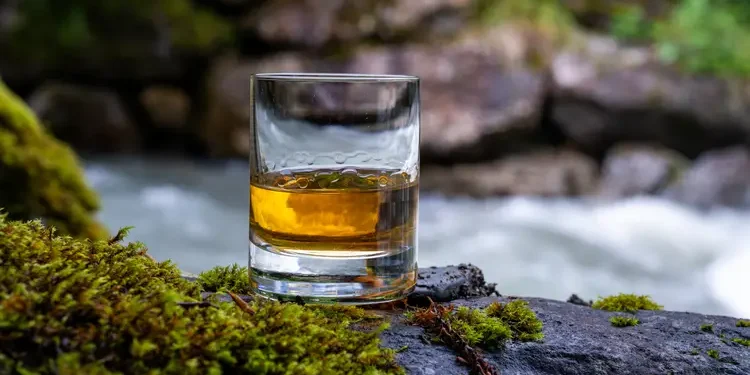The men in my life drink whisky.
Lately they’ve been talking a lot about how it’s produced and what makes one bottle better than another.
Dinner table conversations are given over to the history of the production of Scotch whisky, in particular. Fortunately, it’s a good story.
Let’s Talk About Liquid Gold
It all started in 1494, when Friar John Cor was granted eight bolls of malt (about 1,100 pounds) by order of the King of Scotland. Friar Cor used it to produce 1,500 bottles of aqua vitae.
People had been distilling fermented mashed grains and cereals to make spirits since well before the 15th century, but 1494 was the start of the industry in earnest, when the production of Scotch whisky became regulated and taxed.
Those regulations are what gave us Scotch as we know it today. Everything from the fermentation process to the bottling was standardized.
To be called Scotch, whisky must come from Scotland. And it must have been produced according to the centuries-old regulations (updated in 2009).
Beyond that, a bottle of Scotch can be of five overarching types and can come from multiple distilleries and casks or from a single barrel. Slight variances are allowed in the fermentation process. These are the variables that make some Scotch so much more valuable than other Scotch.
It’s why certain bottles are worth considerably more than your average fifth of Grant’s.
Start Your New Life Today, Overseas
Macallan Adami 1926 is one of the rarest Scotch whiskies ever produced. It was aged in a sherry cask for 60 years. Only 40 bottles were made. Sotheby’s sold one of them for $2.7 million.
A premium whisky is easier to come across than a rare whisky with a production of but 40 bottles, but a premium whisky is still a highly sought-after commodity, making it an accessible and worthwhile investment.
Connoisseurs, including the men in my household, say that 70% of the taste of whisky comes from the cask used to age it. To qualify as Scotch whisky the spirit must be aged in an oak barrel for at least three years.
The longer a Scotch ages, the more valuable it is.
The global demand for Scotch has grown exponentially since the late 19th century. On the 500-year anniversary of Scotch Whisky, in 1994, its global exports broke $3 billion.
Today the global Scotch whisky market is worth $34.70 billion… and it is projected to break $57 billion by 2032.
It has shown itself to be crisis-proof. The industry pivoted to e-commerce during the pandemic to generate record revenues. As Andrew Symington, owner of Edradour Distillery in Perthshire, put it, “Our online sales went through the roof over lockdown. People were drinking more, and they wanted better quality stuff.”
Start Your New Life Today, Overseas
Here at Live And Invest Overseas, we like hard assets, and whisky qualifies, making it a hedge against inflation.
That’s why investing in Scotch whisky today, an asset that steadily and consistently appreciates over time, is better than investing in Scotch tomorrow. A single malt Scotch that starts aging today will be worth on average 10% more than that same single malt that starts aging next year.
Post-pandemic whisky sales continue to increase. Supply can’t keep up.
You can’t make more 10-year single malt Macallan that started aging in 2014. That volume of whisky is set in stone. The increased and increasing demand for premium Scotch means that the total volume in the hopper is steadily falling.
We all know what rising demand and falling supply translate to…
Appreciating prices.
Dawn Davies, head buyer at The Whisky Exchange, says “For older whisky, over 20 years, some of the prices are tripling next year. That could mean a £100 bottle costing £300.”
Whisky is a passion asset that, for the past decade, has outclassed all other luxury-class investments by a wide margin—at least 134%.
Start Your New Life Today, Overseas
Over the years, Lief and I have invested in French primeurs, traveling to St. Emilion in season to buy bottles that we continue to enjoy on special occasions.
Now Lief has worked with our son Jackson, our son-in-law Harry, and friends in Glasgow, Scotland, to create a specialty whisky investment opportunity.
Our friends in Glasgow, being Scottish, are aficionados with long-standing relationships with cask providers and whisky distillers. They run a small operation focused on taste and quality.
They don’t usually open their shop to outsiders, but they’ve agreed to make a current stock of whisky available for private investment. You’d be purchasing the whisky in Tawny Port and Cabernet Sauvignon casks that they’ll store for you in their bonded warehouse.
You own the casks, but they take care of all aspects of the distillation following His Majesty’s regulations. Then you can sell your casks after your whisky has aged a minimum of three to five years. The exit strategy is in place.
Again, this is a special private opportunity of very limited supply. Our friends in Scotland made 17 places available initially. Eight of those were snatched up quick here at Live And Invest Overseas.
The investment requirement is just £30,000… which is projected to nearly double in seven years.
For that investment you’re buying four Port casks containing Ardmore Whisky and four Cabernet Sauvignon casks containing Tullibardine Whisky.
I’m not a whisky expert so I won’t attempt to explain further. To find out more and to join us in one of the merriest investments we’ve been involved with, join Lief, Jackson, and our friends from Glasgow for a special Live And Invest Overseas reader-only webinar this Tuesday, July 30.
Find out more here about how to participate in the special event (it’s free) here.
Until next time,

Kathleen Peddicord
Founding Publisher, Overseas Opportunity Letter










